Menu
Table of contents
It is incredibly important that potential customers who walk by actually walk in and visit your store. But with all the competition that has been added in recent years, this is increasingly difficult.
To make your shopping window stand out as much as possible, it is necessary to offer additional information and grab more space within the shopping window. And within your ads, you can do that with ad extensions. I'm going to tell you all about that today:
What are extensions and why are they so important?
Ad extensions are nothing but useful additions to your ads that allow you to name more relevant information about your product, service or business.
And as you know, Google's search results page is now overloaded with additional information such as a Google My Business, Google Maps and other components. So is to use as many extensions as possible so you can also grab as much space as possible.
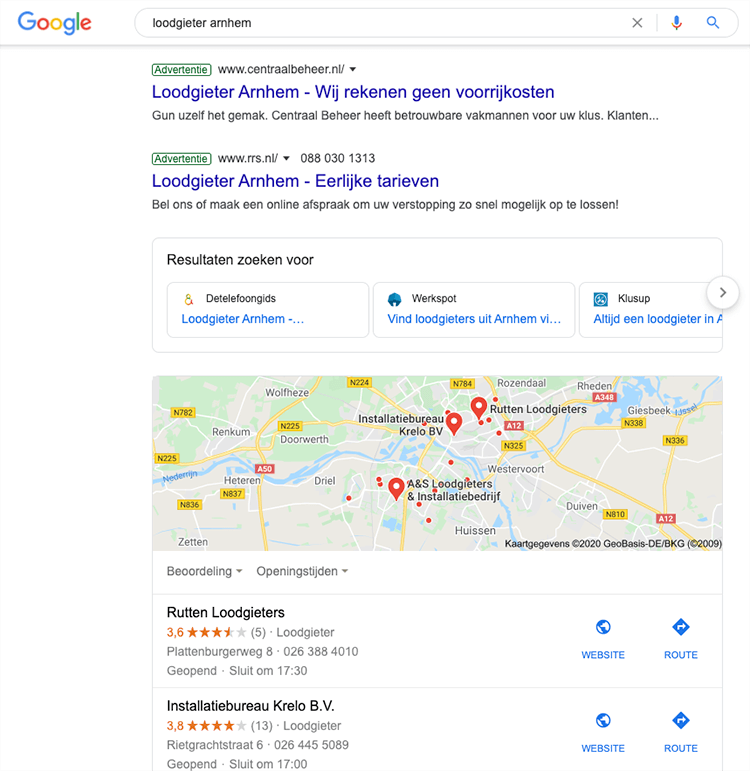
It is now clear what ad extensions are. Now I am going to list some things that are important for you to know:
- By using ad extensions, your ad gets bigger, pushing the competition down further.
- Not all extensions are always displayed, Google makes choices based on certain boundary conditions that we have no control over (competition, space in the search results page, device, etc.).
- Besides the benefit of larger ads, extensions also affect your quality score. This is a score of 1-10 to show the relevance of your ad. The higher the score, the higher the relevance. Google rewards relevance by discounting the CPC (cost per click).
Now that we've covered that, let's take a closer look at what extensions are out there and how to best use them for your business.
What are the most important extensions?
It's not that all extensions are equally interesting. Not at all, in fact. When looking at extensions, I always distinguish between the types of extensions:
- Some essential extensions
- Some optional extensions
A little explanation:
Essential extensions
There are three extensions that are essential for any marketer/entrepreneur: sitelink extensions, highlight extensions (also known as callouts) and website information extensions.
Sitelink extensions
Sitelink extensions allow you to add more links to your ad. With these links you can land visitors on other pages, for example. Think of related products/services or, for example, a contact page.
Only a maximum of 4 sitelinks are always shown at a time, and how many sitelinks you see with an ad varies by device and search query.
Google's algorithm decides which sitelinks will be displayed, and I recommend adding six to eight sitelinks so that the algorithm can rotate and decide for itself what is most relevant to your target audience.
Sitelinks consist of one title and two short description lines. The description lines are often cut off or not displayed at all (especially on mobile devices). So make sure the title is catchy.

Highlight extensions
Highlight extensions allow you to include additional details about your products, services or business. Think free shipping, low price guarantee or other important, differentiating factors.
In other words, this is where you name your USPs.
As with sitelinks, you don't always have control over which highlights are displayed with your ad. Therefore, add six to eight so Google can rotate.

Extensions for website information
With this extension you get extra space to highlight your offer by category (types, services, models, destinations, etc.). Add as many options as possible here as well.

Optional extensions
In addition to the essential extensions that are relevant to every marketer/entrepreneur, I have also created a list of optional extensions. Whether you should deploy these extensions depends on your business, revenue model and offerings.
I will briefly touch on all of these as well.
Call extension
With the call extension, you add a phone number to your ad so potential customers can call directly from your ad. This is especially important in B2B and lead generation.

Leadformula extension
The lead form extension allows potential customers to fill out a form directly, without having been on your website. Again, this is especially interesting in a business-to-business market and in lead generation.
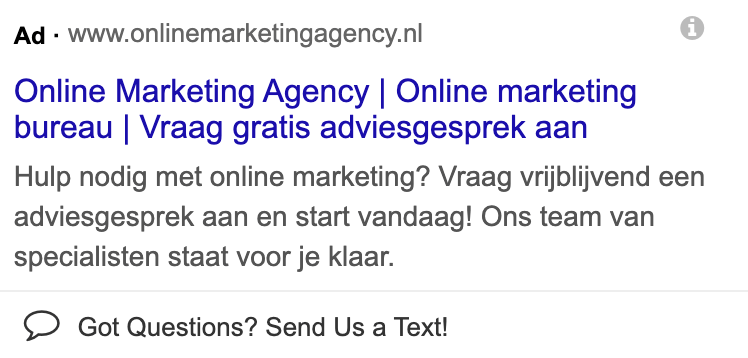
Location extension and location extension for partners
Do you have a physical location and is local findability important to you? Then you should use the location extension. Your address will then be displayed with the ad, making your business easy to find.
Do you sell products through chain stores? Then the partner location extension is right for you. It displays the address of the nearest partner so that customers can go there to buy your products.

Price extensions
Do you want to draw extra attention to your products or services? Price extensions are a way to show your offer directly to potential customers. Below the ad, you get extra space to display the prices of your products and/or services.
The user can scroll through a number of cards themselves, introducing them to your key products and/or services. You can work with fixed, average or starting prices. This gives you extra flexibility.

Prices are fictitious 😉
App extension
Do you have an app and want to give it extra exposure? Then use the app extension. Below your ad is a clickable link to the App Store or Google Play. The app extension is only displayed on mobile devices (and tablets).
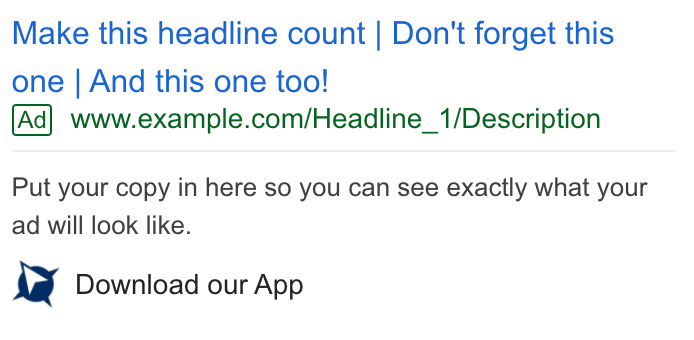
Promotional extension
The promotion extension is perfect if you have a temporary promotion or offer on your website (or physical store). Are the jeans on sale? Are all the breads 1+1 free this week? Or are you offering a temporary discount on your hourly rate as a service provider? Draw attention to it with the promotion extension.
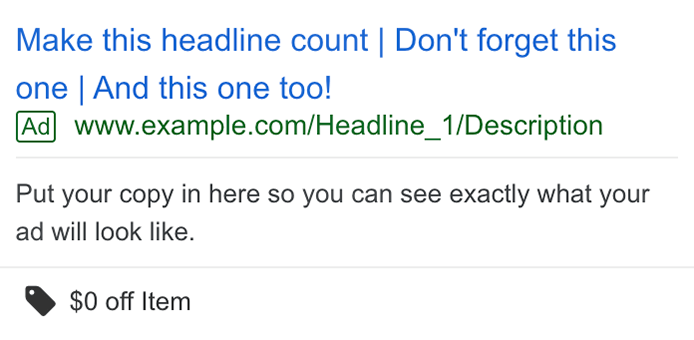
Automated extensions: to do or not to do?
It's now clear to you what extensions are out there. My advice? Most of all, test what works well and what doesn't work well.
In addition to the extensions mentioned, it is also possible to work with automated extensions. I'm going to tell you a bit about that now with the help of Google itself:
"If Google Ads predicts that an automatic extension will improve the performance of your ad, an extension is automatically created and displayed below the ad."
So when you turn on automated extensions, you are saying to Google: do your thing!
Google will then add test and customize extensions itself. This may sound interesting at first glance because you don't have to do it, but you are relinquishing a lot of power with this.
You no longer have control over the extensions and for that reason I advise you not to use this now. Be in control of this because you want to control what is shown where and when, right?
How do you optimize your extensions?
In Google Ads (Ads > Extensions), you can see the performance of your extensions.
Regularly review how your extensions are performing and replace any poorly performing extensions. Keep optimizing extensions until your click-through rate is almost impossible to get higher. Try different variants, different USPs and different combinations.
Tip: Save time and create extensions in the Google Ads Editor
Are you already familiar with the Google Ads Editor? This is an additional tool from Google that allows you to easily make bulk changes to your campaigns. In the Editor, you can create new extensions from the shared library and then add them to the relevant campaigns. This saves you a huge amount of time compared to adding through the usual Google Ads interface.







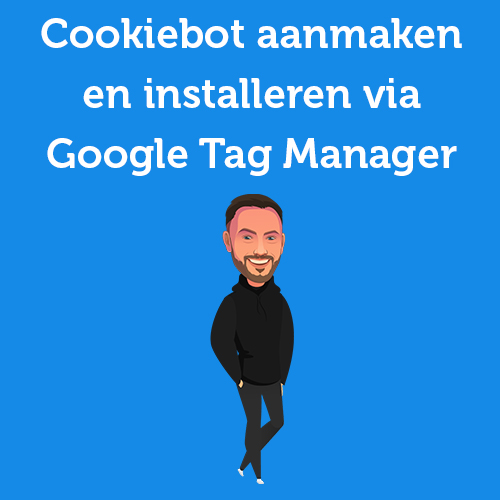


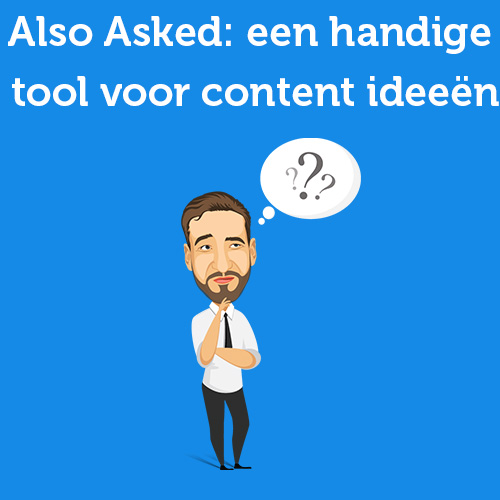
Written by: Daniel Kuipers
Daniel is the founder of Online Marketing Agency. He constantly scours the Internet for the latest gadgets and tactics and blogs about them in understandable language. Well, sometimes.